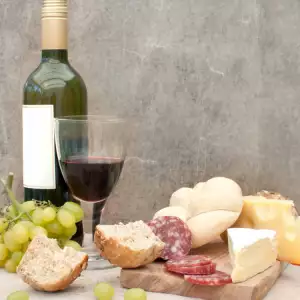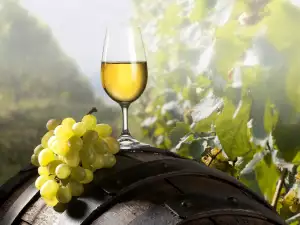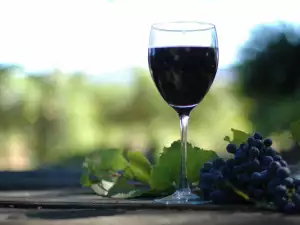Malbec, a red grape variety, originates from the southwestern parts of France, the region of Cahors, where today it is still the most widespread variety. At the beginning of the 20th century, Malbec was one of the most common grape varieties in Europe, especially in France.
After a very cold winter in 1956, more than 75% of the grapevines in Bordeaux died out and today larger Malbec plantations are seen in Cahors and in the valley of the Loire River. What should be noted here is that prior to 1956 Malbec was not particularly prized among French winegrowers.
This is due to the fact that it is highly vulnerable to freezing, diseases and rotting. It was the freezing over of the vineyards in 1956 that gave the French an opportunity to get rid of this variety. It only managed to maintain its status in Cahors, where it was blended with Tannat and Merlot and in recent years even comprised 100% of the local wines.
The variety is major in Argentina, where it was introduced by a French agriculturalist in 1968. The warm climate of the country had an excellent effect on the variety and it quickly spread. The irony is that the variety that the whole world relates to Argentina today was placed in the eradication program at the beginning of the 90s of the last century. At that time, only 10 000 ha were left out of 50 000 ha. Today there are around 25 000 ha in Argentina and 75% of the world's Malbec plantations are found in the same country.
It was in fact Argentina that pushed Malbec into transforming into one of the top 18 grape varieties, now grown extensively in 7 countries and whose popularity continues to rise. Malbec plantations are also found in Chile, Bolivia, the US, Australia, Mexico, Portugal, Canada, New Zealand, South Africa.
Growing Malbec

Malbec is a lively grape variety that proliferates outward. Its leaves are medium sized, dark green and rough, usually tripartite, sometimes whole or pedate. They tend to roll up out toward the edges. An open V is quite typical of the sinus of the leaf stem. Malbec clusters are medium sized and if planted in a suitable area will give small, rounded fruits.
Malbec has the potential to yield a supreme harvest and withstands rain quite well during harvesting but it can give poor harvests in certain seasons. Malbec thrives at high elevations; at low elevations it has a hard time achieving the necessary acidity to create the proper wine taste. The greater temperature amplitudes in the higher regions allow the grapes to accumulate more acidity.
The problem of poor harvests has to do with the use of fertilizers that contain nitrogen and rootstocks that easily absorb and nitrates from the soil. Malbec needs to be trimmed and when the grape clusters are not too strongly attached, the actual clipping can happen without bruising the fruits.
Characteristics of Malbec
In cooler climatic conditions, Malbec yields well balanced wines with a nice color, not very aromatic but lighter than the wines produced from Cabernet.
The fruity tastes of Malbec are likened to cherry, blueberry, plum, pomegranate and blackberry. Malbec can also have other aromas such as chocolate milk, coffee, molasses, coconut, tobacco and black pepper.
The acidity level is medium, as well as the acerbity. Due to its saturated color and tannins, Malbec is very often used in blends.

There needs to be a distinction made between Malbec wines produced in Argentina and those coming from France. The main flavors in Argentinian wines are fruity, while French varieties taste like herbs, blackcurrant, savory and plum. French Malbec is more acidic, contributing to its peppery taste.
Due to its acerbity and acidity, French Malbec is left to age longer. It is generally believed that the best Malbec wines come from Argentina, while in France they are used as a blend variety with Cabernet Franc, Petit Verdot, Merlot, Cabernet Sauvignon in the Bordeaux region and with Cabernet Franc and Gamay in the Loire valley.
Serving Malbec
The wines produced from the Malbec variety are not characterized by a long finish, as can be said about Cabernet Sauvignon. Malbec goes excellently with duck, lamb, beef, chicken legs, veal steak. It is a perfect partner to mushrooms, blue cheese and dishes with cumin.
Malbec is superb with spices that have a slight smoky taste - smoketree, thyme, smoked paprika, rosemary, parsley. Coriander, cloves, vanilla, garlic, green onions, junipers, black pepper, and barbecue sauces are also suitable.
You can serve Malbec with roasted vegetables, peppers, arugula, beets, potatoes, lentils, black beans. As far as cheeses go, Malbec best complements semi-hard cow and goat cheese. But whatever food you choose to serve Malbec with, its ideal temperature that best reveals its qualities is 70°F (21°C).









Comments